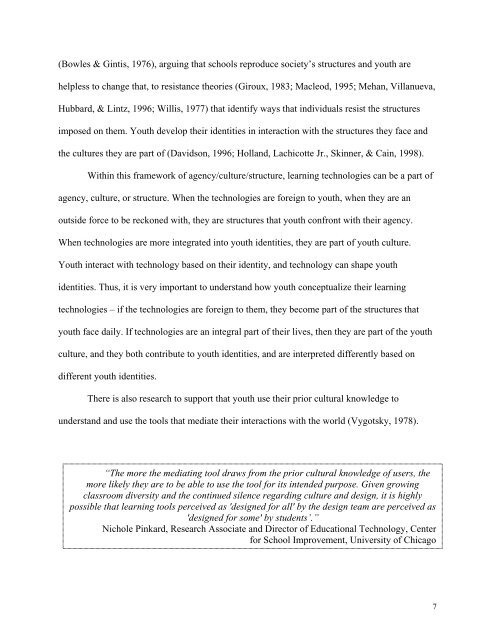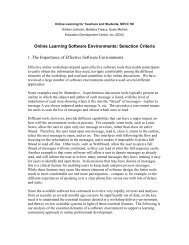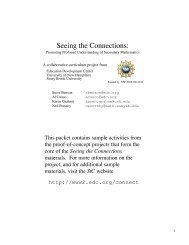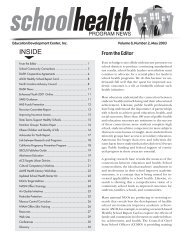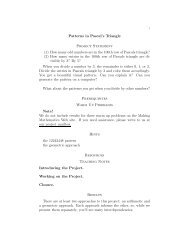It is critical to overcome the digital divide - Education Development ...
It is critical to overcome the digital divide - Education Development ...
It is critical to overcome the digital divide - Education Development ...
Create successful ePaper yourself
Turn your PDF publications into a flip-book with our unique Google optimized e-Paper software.
(Bowles & Gint<strong>is</strong>, 1976), arguing that schools reproduce society’s structures and youth arehelpless <strong>to</strong> change that, <strong>to</strong> res<strong>is</strong>tance <strong>the</strong>ories (Giroux, 1983; Macleod, 1995; Mehan, Villanueva,Hubbard, & Lintz, 1996; Will<strong>is</strong>, 1977) that identify ways that individuals res<strong>is</strong>t <strong>the</strong> structuresimposed on <strong>the</strong>m. Youth develop <strong>the</strong>ir identities in interaction with <strong>the</strong> structures <strong>the</strong>y face and<strong>the</strong> cultures <strong>the</strong>y are part of (Davidson, 1996; Holland, Lachicotte Jr., Skinner, & Cain, 1998).Within th<strong>is</strong> framework of agency/culture/structure, learning technologies can be a part ofagency, culture, or structure. When <strong>the</strong> technologies are foreign <strong>to</strong> youth, when <strong>the</strong>y are anoutside force <strong>to</strong> be reckoned with, <strong>the</strong>y are structures that youth confront with <strong>the</strong>ir agency.When technologies are more integrated in<strong>to</strong> youth identities, <strong>the</strong>y are part of youth culture.Youth interact with technology based on <strong>the</strong>ir identity, and technology can shape youthidentities. Thus, it <strong>is</strong> very important <strong>to</strong> understand how youth conceptualize <strong>the</strong>ir learningtechnologies – if <strong>the</strong> technologies are foreign <strong>to</strong> <strong>the</strong>m, <strong>the</strong>y become part of <strong>the</strong> structures thatyouth face daily. If technologies are an integral part of <strong>the</strong>ir lives, <strong>the</strong>n <strong>the</strong>y are part of <strong>the</strong> youthculture, and <strong>the</strong>y both contribute <strong>to</strong> youth identities, and are interpreted differently based ondifferent youth identities.There <strong>is</strong> also research <strong>to</strong> support that youth use <strong>the</strong>ir prior cultural knowledge <strong>to</strong>understand and use <strong>the</strong> <strong>to</strong>ols that mediate <strong>the</strong>ir interactions with <strong>the</strong> world (Vygotsky, 1978).“The more <strong>the</strong> mediating <strong>to</strong>ol draws from <strong>the</strong> prior cultural knowledge of users, <strong>the</strong>more likely <strong>the</strong>y are <strong>to</strong> be able <strong>to</strong> use <strong>the</strong> <strong>to</strong>ol for its intended purpose. Given growingclassroom diversity and <strong>the</strong> continued silence regarding culture and design, it <strong>is</strong> highlypossible that learning <strong>to</strong>ols perceived as 'designed for all' by <strong>the</strong> design team are perceived as'designed for some' by students’.”Nichole Pinkard, Research Associate and Direc<strong>to</strong>r of <strong>Education</strong>al Technology, Centerfor School Improvement, University of Chicago7


